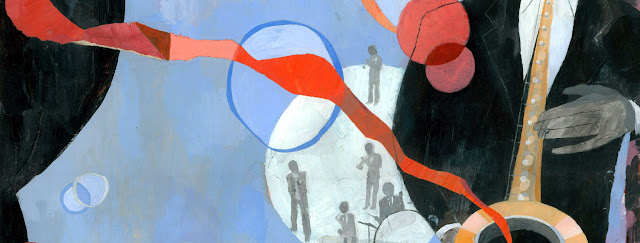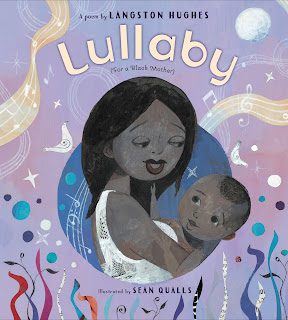In the first picture book I illustrated,
The Baby on the Way, I was required to alternate between scenes of the rural south and an urban rooftop garden. This was back in 2004 when I first began using hand-painted paper as collage for grass and other foliage.
Soon after, I was offered the opportunity to illustrate The Poet Slave of Cuba While I did use some collage for the art, I mostly painted the foliage.
Around the same time I was creating art for the book Dizzy, about the life of jazz icon Dizzy Gillespie. I used the same stylization for flames as I had been for grass.
I came to really enjoy adding these decorative elements to my art not only enhanced the imagery but also gave me an opportunity to be more abstract in my work.
By the time I illustrated Lullaby , I wanted to take a different approach to these elements and began including magazine collage along with my hand-painted collage papers and the foliage took on a greater prominence.
And with Emmanuel's Dream, I decided that a dialed back, hand-painted collage paper approach would work best to accent the landscape of Ghana.
This week I have two pieces to share:
From time to time, I like to return to my earlier art to see what I was doing at the time. Often, I'll find elements in the work that I want to explore further. I like to think of it as finding forgotten conversations.
These are both mixed media on 6x6" on masonite.
Next week I'll be in Columbus, OH speaking on a panel: “The Power of Picture Books: Illustrators Who Use Pictures to Speak” for the 17th Annual Conference for American Association of School Librarians, AASL (http://national.aasl.org/) . Also, Selina and I will be at theBrooklyn Museum's Ninth Annual Children's Book Fair (https://www.brooklynmuseum.org/calendar/event/ninth_annual_childrens_book_fair) on Nov. 14 from 12-4pm.
Thanks!
Sean






















